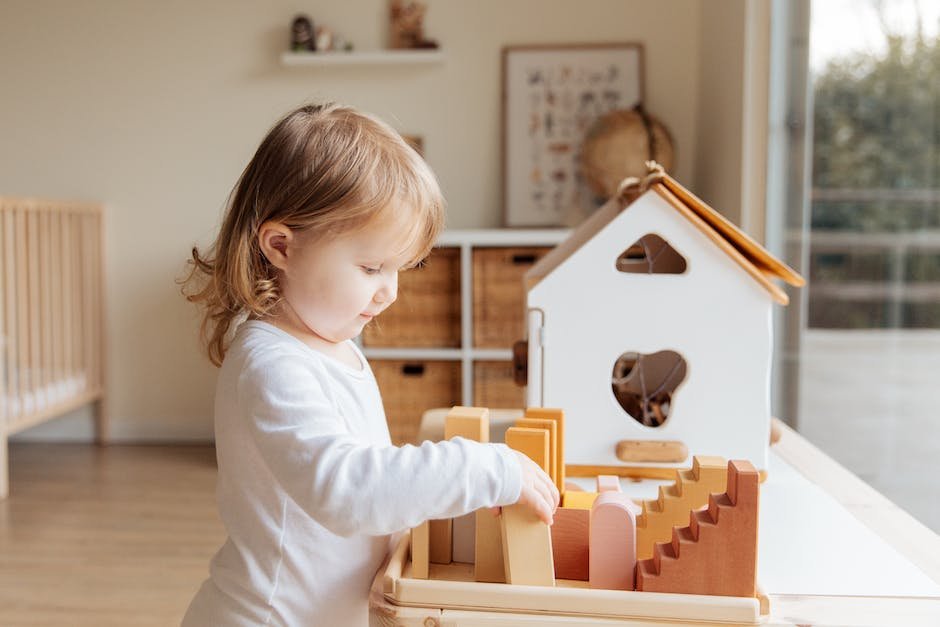
For many individuals on the autism spectrum, repetitive behaviors are a hallmark of their daily experiences. These actions, ranging from rhythmic rocking to persistent hand-flapping and the repetition of sounds or words known as echolalia, are not merely quirks but are intrinsic to the condition’s complex nature. To fully grasp the significance of such behaviors, one must delve into the multifaceted reasons behind them, understanding that each motion and repeated phrase carries weight and purpose. Whether it’s an attempt to navigate overwhelming sensory environments, express unspoken thoughts, or seek solace amidst stress, repetitive behaviors stand as a testament to the autism spectrum’s intricacies. The insight presented here aims to illuminate the diverse roles these actions play in the lives of autistic individuals, paving the way for greater understanding and supportive strategies.
What is Repetitive Behavior in Autism?
Understanding Repetitive Behaviors in Autistic Children: A Parent’s Insight
Hey there, fellow parents!
Let’s take a moment to dive into a topic that might be familiar to many of us who have the joy of raising a beautiful child on the autism spectrum. We’re talking about repetitive behaviors, often one of the most recognizable aspects of Autism Spectrum Disorder (ASD). But what exactly are we referring to when we discuss this?
When mentioning repetitive behaviors in autistic children, we’re looking at a variety of actions that can be physical (like hand-flapping or rocking) or verbal (such as repeating words or phrases). These behaviors, also called “stimming,” serve as a hallmark of autism and are often ways for our kids to self-soothe, express emotions, or cope with the overwhelming sensory input that floods their unique nervous systems.
Here’s the thing – while these behaviors might seem odd or concerning at first glance, they’re an essential part of your child’s world. For many kids on the spectrum, these repetitive actions provide comfort and a sense of control. Think of it as their personal rhythmic anchor in a sometimes chaotic sensory ocean.
On the family front, it’s crucial to embrace and understand these behaviors rather than discourage them. Of course, if they become self-injurious or severely interfere with daily life, it’s important to seek support from therapists who specialize in autism. They can work with our little ones to develop strategies that keep them happy and safe.
But let’s not forget, our role as nurturing parents is to create that safe space where our children can be themselves, stims and all. By understanding and respecting these repetitive behaviors, we let our unique stars shine in their own beautifully distinctive patterns.
So the next time we see our little ones engage in these repetitive actions, let’s take a deep breath, give them a smile, and remember – this is their way of navigating their world. As we continue on this incredible parenting journey, let’s keep sharing, learning, and growing a community that celebrates every quirk and quality that makes our children wonderfully who they are.
Keep parenting beautifully!

The Role of Sensory Processing
Sensory processing and its connection to repetitive behavior in kids with autism is a deeply interwoven relationship that deserves our attention and understanding. At the core of this relationship is the fact that many children with autism experience the world in a very different way from their neurotypical peers. For these kids, the five senses might be heightened or muted in ways that can be difficult to comprehend.
Now, when we talk about sensory processing, we’re delving into the manner in which the nervous system receives messages from the senses and turns them into appropriate motor and behavioral responses. A child with autism might have a sensory processing disorder, meaning the brain has trouble interpreting sensory information. This is where repetitive behaviors often come in as a key player.
These behaviors, sometimes referred to as ‘stimming,’ can be a direct response to sensory overload. Imagine a classroom buzzing with fluorescent lights, chattering children, and the scuffing of sneakers on the tile floor. For a child with sensory processing issues, this environment can be overwhelming. Repetitive behaviors like hand-flapping or rocking provide a way to self-regulate, to find a sense of equilibrium amidst the sensory chaos.
Moreover, these repetitive actions can serve as a method to either seek or avoid sensory input. A child craving sensory stimulation might repeatedly touch a surface to feel the texture, while another might engage in behaviors to escape an aversive sensory experience—think of covering ears to reduce noise, or humming to create a personal, soothing sound bubble.
There is also a fascinating interplay between sensory processing, emotions, and repetitive behaviors. These actions can be heightened during times of stress, anxiety, or excitement, serving as a barometer for inner emotional states. Observing patterns in these behaviors can give keen insights into what may be causing distress or pleasure, helping to tailor environments that are more supportive and comfortable.
Navigating the sensory needs of a child with autism can feel like a delicate balancing act. Ensuring that there is a variety of sensory experiences available, without overwhelming the child, is crucial. This might include creating a cozy corner stacked with soft pillows for comfort or having stress balls and putty on hand for tactile stimulation.
It’s also essential to communicate with the child about their sensory preferences and dislikes. For those with verbal skills, conversations about sensations can be informative. For non-verbal children, paying close attention to non-verbal cues and experimenting with different textures, sounds, and visual stimuli can make all the difference.
Remember, identifying and understanding sensory processing triggers can greatly reduce the reliance on repetitive behaviors. Regularly scheduled sensory activities known to calm or engage your child can be helpful. For example, swinging, jumping on a trampoline, or engaging in water play can provide beneficial sensory input.
At the end of the day, empathy, patience, and a keen observational eye are invaluable tools. Each child’s sensory landscape is unique, and unlocking the secrets of their sensory world opens the door to more profound connection and support.
As we continue to explore the intricacies of sensory processing and its impact on repetitive behavior, let’s approach each child with an open heart and mind, ready to learn and adapt to their individual needs. And through it all, the act of cherishing these exceptional children and advocating for their comfort and happiness remains the most important job of all.

Communication and Repetitive Behaviors
Expanding on the foundation of understanding repetitive behaviors in autistic children as forms of self-soothing and communication, it’s equally important to delve into the underlying sensory experiences that may trigger these behaviors. Autistic children may experience the world very differently, with varying degrees of sensory sensitivity.
To further grasp the significance of repetitive behaviors, consider the concept of sensory processing; this is how the nervous system interprets messages from the senses and turns them into appropriate motor and behavioral responses. When this process works differently, as it often does in autistic children, it can be overwhelming, leading to what’s called sensory overload. Such an overload can manifest as an intense need to seek or avoid certain sensory inputs. This is where repetitive behaviors, also known as stimming, step in; they can help modulate sensory input and provide a sense of equilibrium.
For instance, while lighting or ambient noise in a room may go unnoticed by some, for a child with autism, these can be intensely distracting or even painful, causing them to retreat into repetitive motions to manage the discomfort. Repetitive behaviors can thus be insights into a child’s sensory experience — a nonverbal form of sharing their inner world and what they might need or want to avoid.
Supporting these sensory needs then becomes a critical avenue in nurturing an autistic child’s development. A sensory-friendly environment at home or in the classroom, which caters to their unique sensory preferences, can reduce occurrences of overload. Such environments include thoughtfully adjusted lighting, reduced background noise, or the availability of certain tactile objects that a child can engage with when they need to regulate their sensory input.
Moreover, engaging in sensory activities, specifically tailored for a child’s needs, can offer constructive ways to handle sensory processing differences. This can be as simple as having a dedicated ‘cozy corner’ with pillows and blankets for a child that seeks pressure or a quiet, dim place for a child that gets easily overstimulated by visual or auditory input.
Open communication channels with the child are vital, too. Nonverbal cues, or using augmentative and alternative communication (AAC) methods, can offer insights into a child’s preferences, helping to better understand and respond to their sensory experiences.
Let’s not forget the role of empathy, patience, and careful observation in this entire process. Every child with autism is unique, and behaviors that may seem baffling at first can, with patience and empathy, be understood as the child’s attempt to convey their needs or feelings.
In summary, repetitive behaviors in autistic children often go hand-in-hand with how they process sensory information. As each child dances to the rhythm of their own neurological beat, recognizing and supporting their sensory preferences becomes not just a responsibility, but a journey of shared experiences that both the child and those around them can navigate together.
By fostering such understanding and tailored support, children with autism can thrive, finding comfort and joy in a world that respects and adjusts to their sensory experiences. The message is clear: embrace the individuality, offer the necessary support, and watch them flourish within the beautiful tapestry of diverse human experiences.

Coping Mechanisms and Stress Relief
Navigating the Sensory Landscape: How Autistic Children Use Repetitive Behaviors to Balance Their World
When you watch a child with autism engaged in repetitive behaviors, it’s like looking through a window into another way of experiencing the world. Each action, each pattern, has a profound purpose, often tied to navigating the sensory landscape that might be overwhelming for them. Picking up from the understanding of how such behaviors are self-soothing mechanisms or a way of expressing emotions, let’s venture into the intricacies of the sensory experiences that often trigger these behaviors.
Sensory processing varies greatly among children with autism. Some may be sensory seekers, looking for additional input to help them feel ‘just right’, while others might be sensory avoidant, feeling easily bombarded by the lights, sounds, and touch that the rest of us might filter out effortlessly. It’s this spectrum of processing that can lead to an array of repetitive behaviors, each serving as a modulator to either turn up the volume of sensory input when it’s too quiet or turn it down when it’s overwhelmingly loud.
In comes the need for sensory-friendly environments—places where the lighting, acoustics, and overall sensory input are adjusted to prevent sensory overload and create a supportive space. Picture soft lighting, quiet corners, and objects that can be fidgeted with—elements that can make a world of difference. These spaces allow children with autism to engage with their surroundings on their own terms, which can significantly decrease the need for repetitive behaviors used to cope with sensory overload.
Equally important is the tailoring of sensory activities. Engaging children in these can help them manage their distinct sensory processing differences positively. Whether it’s using a swing to provide vestibular input for a child who seeks movement or using weighted blankets to provide calming pressure, sensory activities are invaluable tools that offer alternative pathways to achieve sensory balance.
Remember, communication is a two-way street, and it’s no different when it comes to understanding a child’s sensory preferences. Not every child might have the verbal capability to articulate what feels good and what doesn’t, so it’s up to us to keep those communication channels open. We might need to rely on nonverbal cues, gestures, or even augmentative and alternative communication (AAC) methods to get a sense of what a child is experiencing and how they prefer to interact with their environment.
At the heart of connecting with children with autism is a blend of empathy, patience, and keen observation. By watching and learning, parents and caregivers can tune into the nuances of each child’s reactions to sensory stimuli. Through this understanding, responses can be better tailored, support can be more aptly provided, and repetitive behaviors can be seen in a new light—not as obstacles, but as bridges to greater understanding and comfort.
Last but not least, parenting a child with autism is about recognizing and nurturing their individuality—sensory preferences included. By supporting these preferences, we help these wonderful children not only to manage the vast sensory input of their world but to truly thrive within it. Whether it’s through the calm provided by a steady rocking motion or the joy in repeating lines from a favorite song, let’s learn to read between the lines of these behaviors. They are a silent language, speaking volumes about our children’s needs and how deeply they feel the world around them.

Impact of Routine and Structure on Repetitive Behaviors
Routines and structure are often touted as the backbone of a well-run family home, but for families with autistic members, they hold an even more profound significance. These elements of daily life can greatly influence repetitive behaviors, which are common in individuals with autism.
For starters, routine provides predictability in an often chaotic world. Children with autism may find comfort in knowing what to expect next, which can alleviate anxiety and stress. When the day follows a predictable pattern, these children may experience fewer sensory surprises that could trigger overwhelming reactions or repetitive behaviors.
Structure, much like routine, adds an additional layer of predictability and organization. By clearly defining when and where certain activities happen, it minimizes the potential for unsettling unpredictability. This sense of order can help children with autism navigate their day with greater ease, even promoting a sense of control and independence.
Moreover, routines and structured environments can actually help to reduce the frequency or intensity of repetitive behaviors by offering alternative, more adaptive ways to cope with sensory input or emotional dysregulation. For example, integrating sensory breaks or specific times for movement can provide the necessary outlet for sensory seeking behaviors in a positive and controlled manner, potentially reducing the need for self-stimulatory repetitive actions.
It’s also worth noting that a well-structured routine includes not just the “what” and “when,” but also the “how.” Consistent approaches to tasks and transitions, communicated in a way that’s clear to an autistic child, can help them understand and engage with activities without undue confusion or stress. This approach can decrease the occurrences of repetitive behaviors that arise as a way to communicate confusion or a need for help.
Keep in mind that while routine and structure are incredibly beneficial, it is essential to remain flexible. Rigid adherence to a schedule can become problematic if changes occur, which can be just as stressful for a child with autism. Thus, it is important to teach flexibility within the framework of routine, preparing for unexpected changes and modeling calm responses to them.
Creating an optimal balance between routine and flexibility requires patience, but the positive impact on repetitive behaviors and overall well-being can make it well worth the effort. With each family finding their unique rhythm, the emphasis should always be on fostering a nurturing environment where every member, autistic or not, feels safe, understood, and loved. This approach goes a long way in supporting the growth and development of children with autism, helping them to form connections and thrive in their own, unique ways.

Intervention Strategies for Managing Repetitive Behaviors
Strategies to Manage Repetitive Behaviors in Children with Autism
Hey, loving families! Let’s dive into the hearty task of fostering growth and facilitating comfort for our wonderful children with autism, particularly when it comes to managing repetitive behaviors. As many of us already understand, consistency and predictability are like warm hugs to a structured mind. Let’s explore how these elements play out in day-to-day life.
Imagine the relief we feel when we know what’s coming next. For a child with autism, this isn’t just comforting; it’s essential. Routine and structured environments become the cornerstone in their life’s architecture. For starters, a daily schedule that’s as reliable as the sun’s rise and set can significantly soothe the impulse for repetitive behaviors. We’re talking about visual schedules, clear and consistent routines for meals, playtime, and sleep – oh, the harmony it brings!
Now, let’s chat about transition strategies. We know change can be hard. So, let’s turn transitions into stepping-stones with forewarnings and countdowns. Giving a five-minute heads-up before switching activities can make a world of difference. It’s like a gentle nudge rather than an unexpected push into the new.
In the kitchen of homemaking, flexibility is the spice that complements routine. Now, this doesn’t mean throwing the schedule out the window. It’s about having a plan B (and sometimes C) for those days when things just don’t go as planned. This teaches our children adaptability within a safe framework – a skill as valuable as the family recipe for resilience.
Speaking of recipes, let’s whip up one for sensory play. Providing structured, sensory-rich activities can be a delightful way to channel a child’s need for repetitive motions into positive sensory experiences. Think sandbox treasures, water beads, or playdough kingdoms. Encouraging these activities not only supports sensory integration but might also reduce the need for less adaptive repetitive behaviors.
Now, let’s not overlook the quiet power of nonverbal communication. For some of our little ones, words are like elusive fireflies. So, we learn to speak with our actions, our expressions, and our understanding gazes. Simple gestures, like a thumbs up or a high-five, can affirm our children without a symphony of words.
Lastly, let’s look around our homes. A calming space, free from sensory overload, is a sanctuary for a child with autism. Muted colors, organized play areas, and defined spaces for various activities build an environment where children can thrive without feeling overwhelmed.
Let’s weave these strategies with threads of love, understanding, and unwavering support. The tapestry we create will wrap our children in security and comfort as they navigate their unique paths.
In the cozy corner of the internet where parenting, family lifestyle, and homemaking mingle like friends at a coffee shop, let’s continue to share moments, swap strategies, and spread support. Our journey is more than a solo adventure – it’s a community effort, and every tip shared is a step toward creating a nurturing environment where all of our children, autistic or not, can blossom into their beautiful selves. So, dear families, let’s keep learning, loving, and living this vibrant parenting life together.

Exploring the whys and wherefores of repetitive behavior in autism uncovers a tapestry of need, communication, and personal coping that speaks volumes about the lived reality of those on the spectrum. As we look beyond our own perspective and venture into the intricacies of these patterns, our newfound understanding arms us with the compassion and expertise to offer meaningful support. Armed with behavioral insights and therapeutic nuances, we can craft environments that respect and cater to the needs of individuals with autism, elevating their quality of life while honoring their unique self-expressions. Peering through the lens of repetition, we catch a glimpse of the profound resilience and adaptability that characterize the autism journey, fostering an environment where diversity in behavior is not just acknowledged but embraced.





